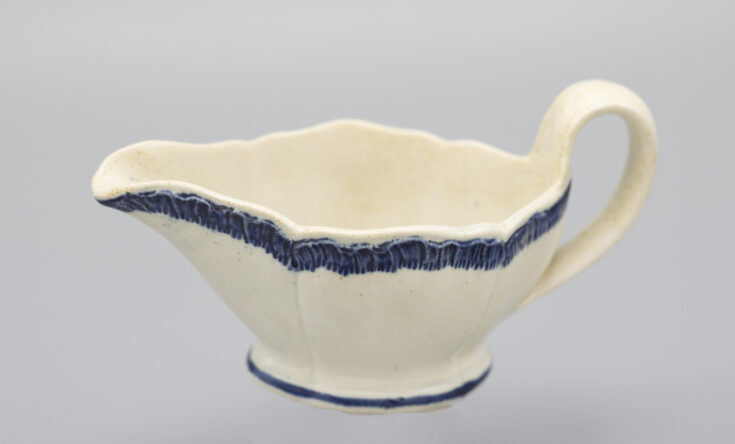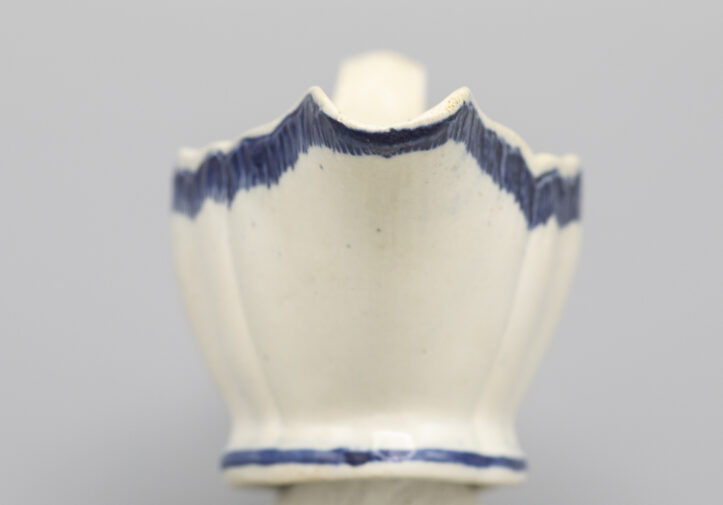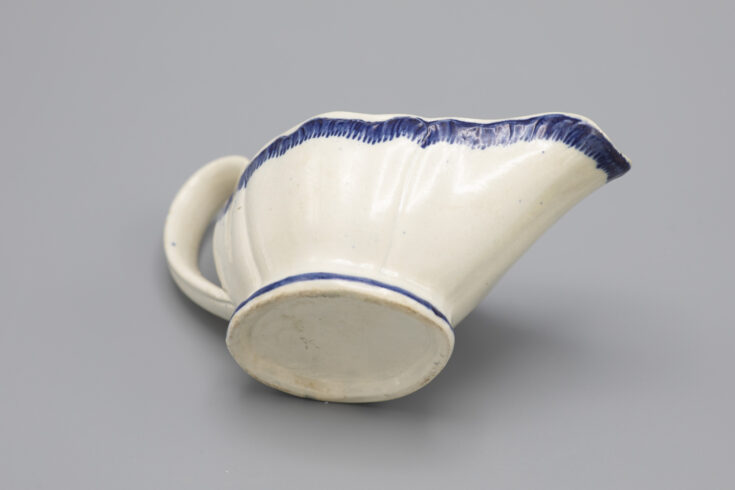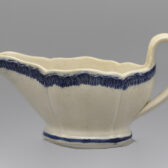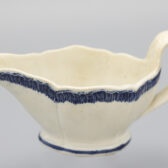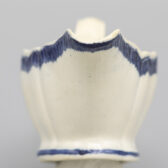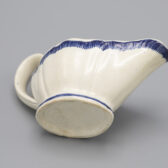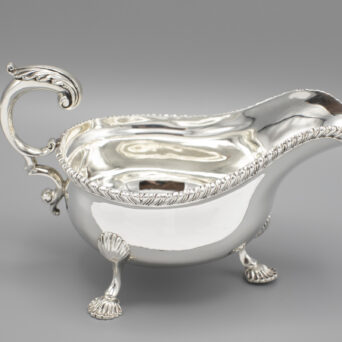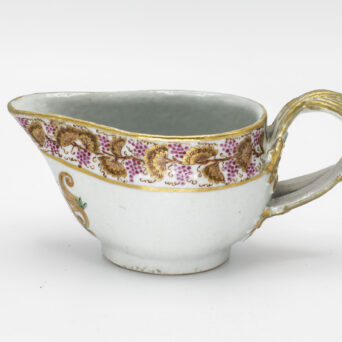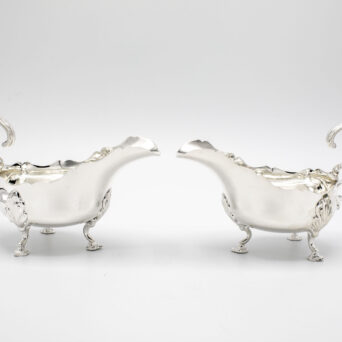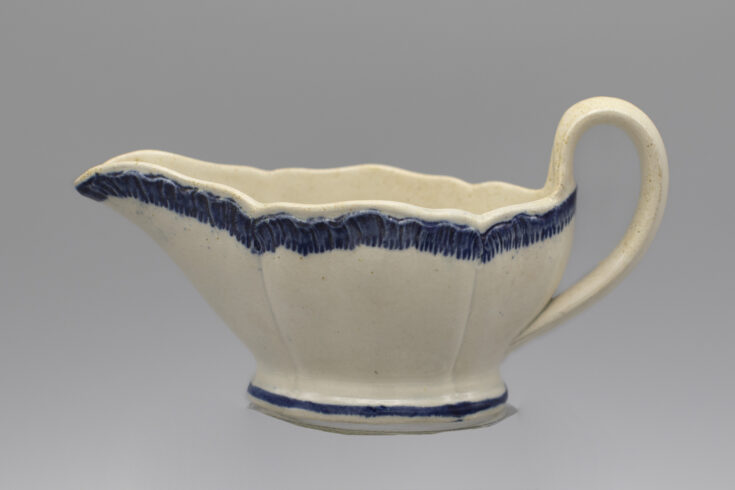
Antique English Creamware Sauce Boat
Creamware, named after its ivory color, is a type of fine earthenware pottery. It was made from a combination of white clay and calcined flint, and was produced in England and Europe during the late eighteenth and nineteenth centuries. There were several versions of creamware that were developed in the 18th century. However, Josiah Wedgwood, who founded the Wedgwood company in 1759, deserves recognition for improving the formula. He created a colorless lead glaze that resulted in creamware as we know it today. This became a suitable and less expensive replacement for Chinese porcelain. Thus, creamware became extremely popular and could be found in many households throughout England and America. There has always been a great effort made to keep the designs in tune with current fashion and thus, creamware is as popular as fine porcelain.
A charming and diminutive antique early 19th century English Creamware Sauce Boat. The blue feather edge decoration resides on the base as well as on the rim. The Sauce Boat is in pristine condition and would be a welcome addition to any home.
